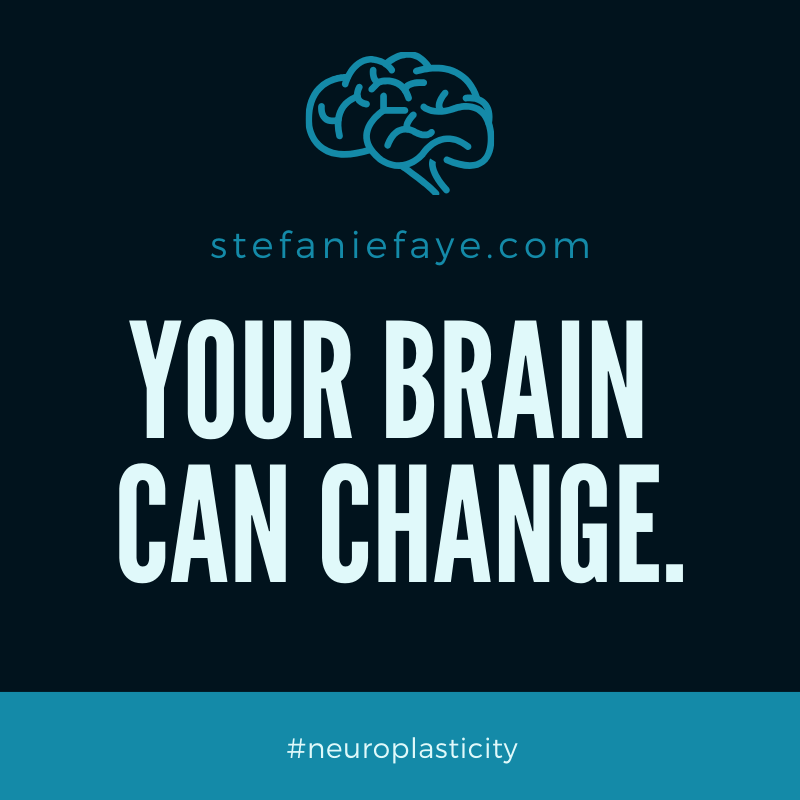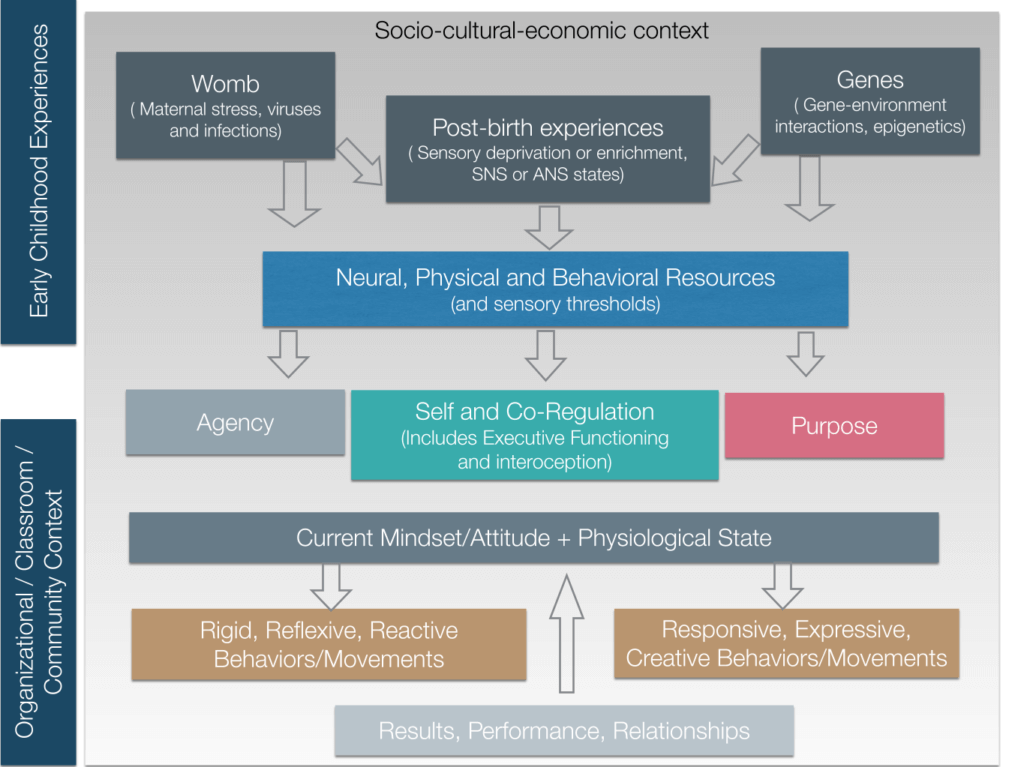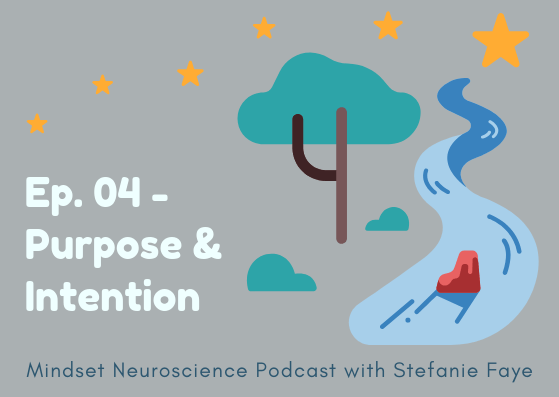
A mindset shift is a visceral, sensorimotor experience.
What does 'visceral' mean?
Viscera refers to the soft internal organs of the body, including the lungs, the heart, and the organs of the digestive, excretory, reproductive, and circulatory systems.
Visceral organs encode mechanical and chemical events and relay these messages to the brain.
When a mindset shift occurs, the spark of new neural activity triggers a cascade of new mechano-electro-chemical events within the body vehicle. There's a shift in communication patterns between the body and the brain.
What does 'sensory' mean?
Sensory refers to signals traveling from the body to the brain
The signals that are picked up by the sensory receptors within your viscera as a result of this new neural activity are sent up to the brain through sensory (also called 'afferent' fibers).
What does 'motor' mean?
Motor neurons deliver instructions from the brain to the body.
When a mindset shift happens, new signals are being sent down as instructions from the brain to the rest of the body through motor fibers.
These can alter activity such as where your eyes look, how your body moves, and how different systems change your point of attention and awareness.
The result? An ‘aha’ moment, that creates a felt experience of a shift that also relates to a new movement, new awareness of what you perceive, and new behavior.
In my experience - when I have worked with a client or group and a mindset shift occurs (and when it happens within me), I notice the following:
- a facial expression that usually involves a widening of the eyes, a slight opening of the mouth, a nodding of the head and then a phrase like ‘whoa’, ‘wow’, ‘I never thought of it that way before’... or 'I knew that deep down'
- A softening or smoothing out of the facial muscles around the eyes and forehead
- After that initial ‘aha’, I usually see a movement of the eyes in an upwards or sideways direction - as the person looks for how this connects even more ideas and behaviors
- Sometimes, tears start to form as the person understands themselves or another person in a new light
- A slowing down of the pace of speech at first as they formulate what they are trying to connect - and then an increase as the person starts to add more examples of things they are seeing in this new light and how this is different than how they were perceiving it before
This is usually then followed by an idea of how to see their behavior or another person’s behavior differently.
And the best part - a report later of how just seeing things in that new way altered their experience of something they had done so repetitively that they thought there was no other way.
The very first change of facial expression is the moment I live for. This is because in my decades of sparking these shifts, I know that once I’ve seen that facial movement, I know there has been an internal shift. And that new level of awareness is what leads to new behaviors.
Does it mean the change of behavior will forever fix the person’s problems? NO! (And this is related to a type of thinking that i’ll get to in another post about linearity).
BUT… The power of a mindset shift - one that happens explicitly - is that it sparks an awareness that a shift in perception can happen, and that shift in and of itself creates the internal change that leads to new experiences.
There are two key resources I’m sharing with you about the power of mindset -
one is The Twelve leverage points: Places to intervene in a System by Donella Meadows
http://www.donellameadows.org/wp-content/userfiles/Leverage_Points.pdf
You’ll see that a Mindset Shift is listed as one of the most effective and efficient leverage points for intervening in a system and creating change. Remember that a ‘system’ also includes you and your neural networks and behavior patterns.
The second is a chart I created that is based on a combination of research from the University of Chicago as well as work from Stephen Porges, Max Tegmark, Antonio Damasio and Allan Schore. It gives an overview of much of what I cover in my content, particularly my podcast.
In a massive meta-study from U Chicago, (link listed in the article), we see that Mindset is also a significant point that influences behaviors, social skills, and performance.
Their research reveals that when it comes to behavior change, we have been using a formula that is completely backwards:
When we focus on performance or results, we are looking at the end point that flows out of various behaviors, which flow out of (or are influenced by) a person’s mindset.
We need to address mindset first, in order for new behaviors to emerge, which then lead to different results. Not the other way around.
This is because a ‘mindset’ is an established configuration of neural activity.
It is a reinforcing feedback loop within the brain-body that then influences what is perceived and predicted. If this is not addressed, a person will remain stuck in past-oriented behaviors, micro-movements and associated neurochemical setpoints.
This is why mindset or paradigm shifts are one of the most powerful leverage points for creating changes in behavior.
But how do mindsets get created? As you can see from my chart, I’ve added a wider systems view of what actually feeds into and builds ‘mindset’ in the first place.

I’ll continue to share with you insights about these systems and connections throughout the coming months.
So... we're seeing that mindsets and paradigms are critical leverage points for transformation.
Is there anything more powerful than that?
Yes.
Transcending a paradigm altogether.*
(*I'll explain more in an upcoming article)
For next week's email, I have a question for you…
What do you think is more a marker of resilience: Variability or consistency?


